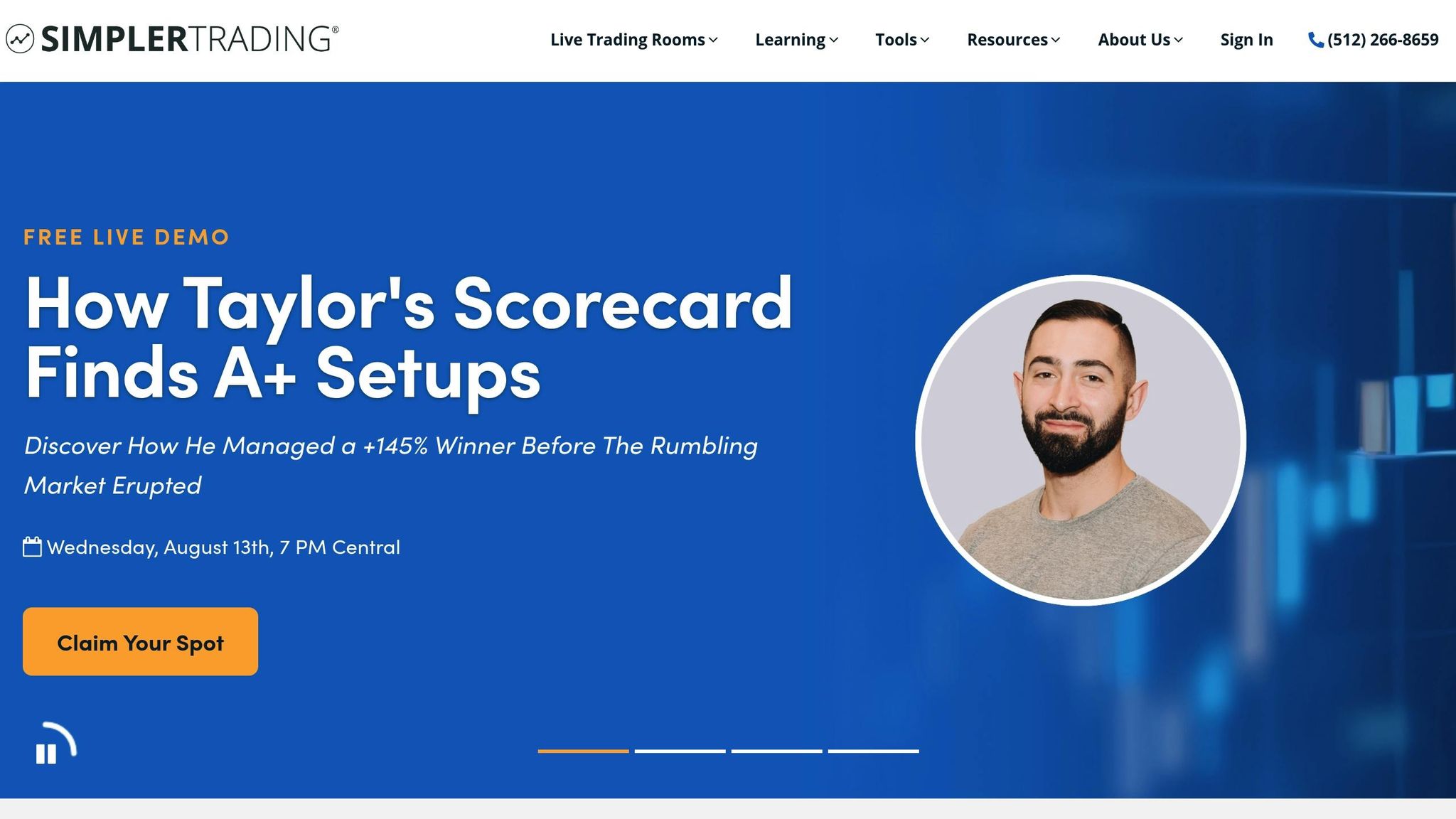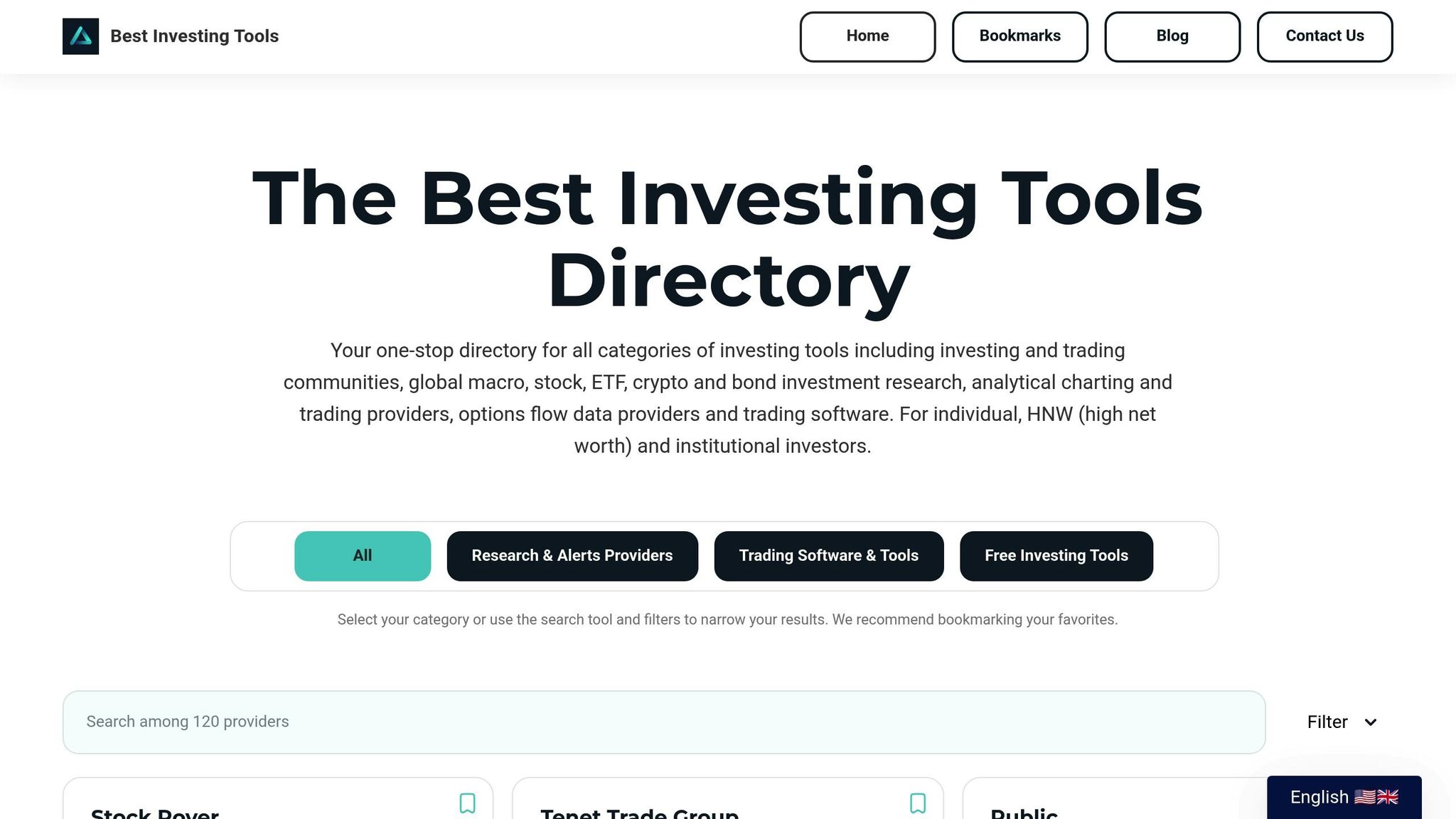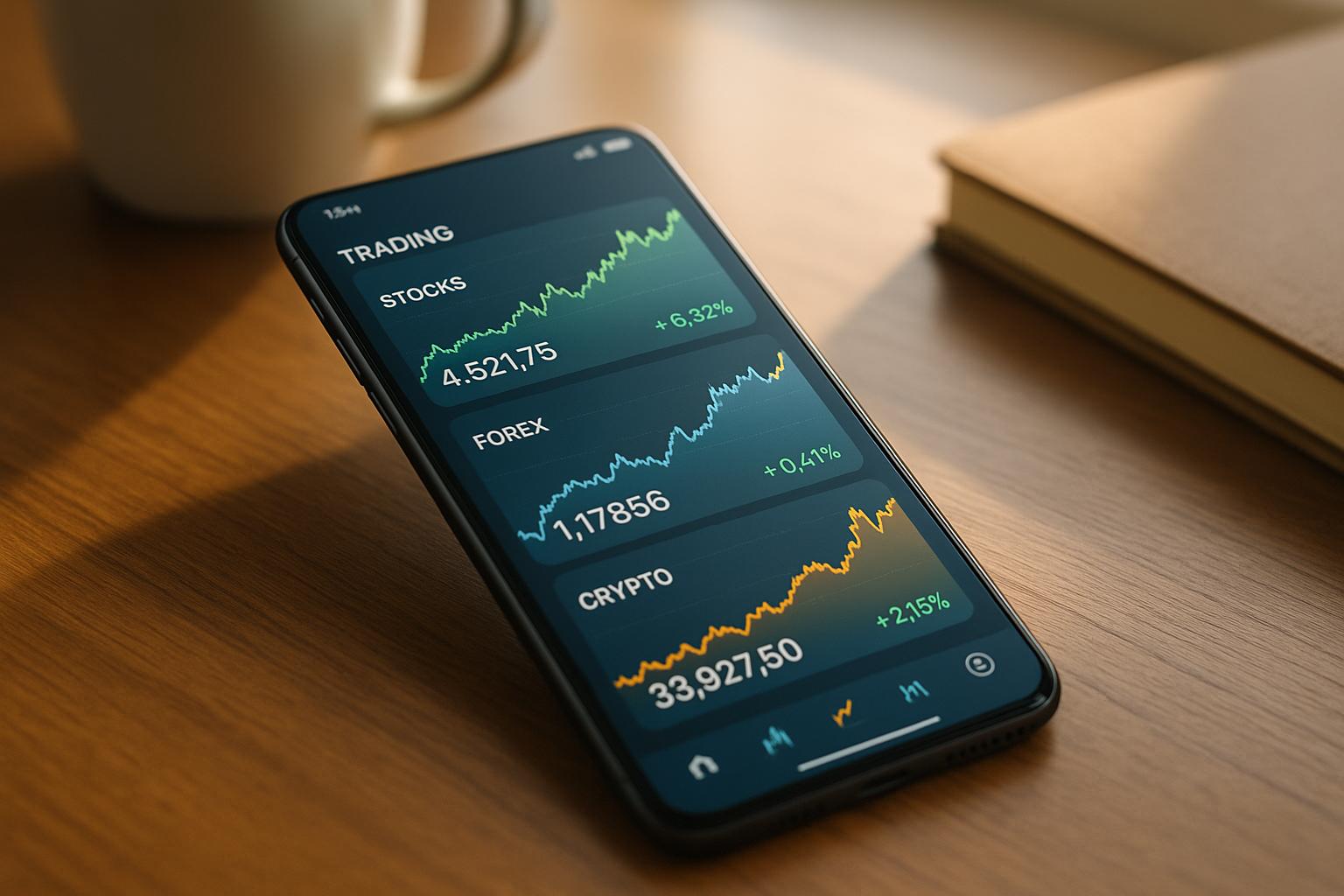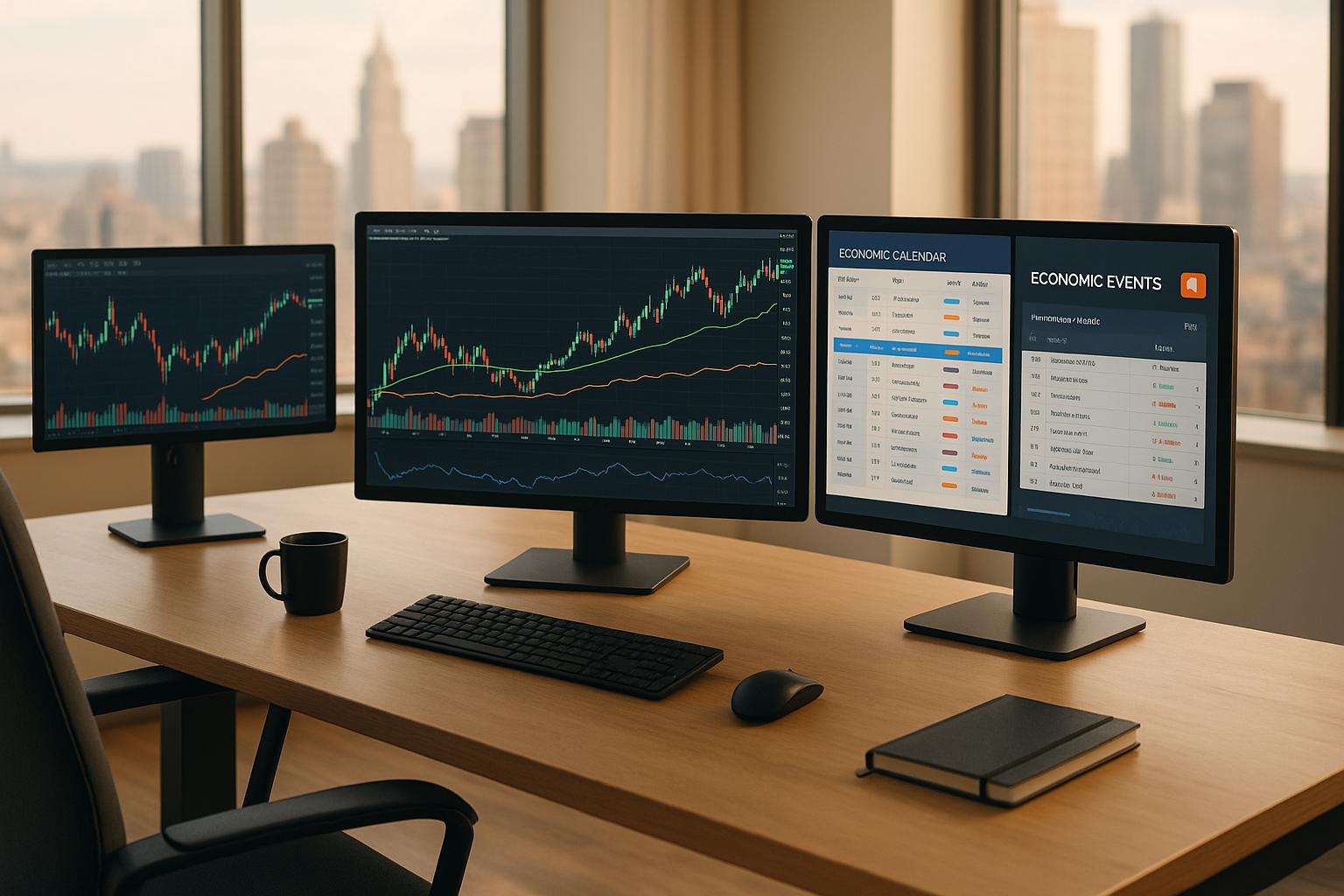Dark pools are private trading platforms where large investors trade securities discreetly, avoiding price swings caused by public disclosure. These trades are reported post-transaction to ensure market transparency. However, issues like delayed reporting, inconsistent standards, and privacy concerns create challenges for regulators and investors alike. Efforts to improve reporting include stricter SEC and FINRA rules, technological upgrades by operators, and tools that track dark pool activity. Accurate reporting is key to maintaining trust and fair market practices in the growing dark pool sector.
What is Dark Pool Trading? - Kody Ashmore | Simpler Trading Tips

How Dark Pool Trades Are Reported
In the U.S., regulations require dark pools to report completed trades through authorized channels. This ensures transparency in the market while maintaining the confidentiality of the trading process. Here's a closer look at how this system operates.
Regulatory Rules for Dark Pool Reporting
The Securities and Exchange Commission (SEC) and the Financial Industry Regulatory Authority (FINRA) oversee how dark pools handle trade reporting. As Alternative Trading Systems (ATS), dark pools must adhere to strict post-trade reporting standards, similar to traditional exchanges, even though they keep pre-trade data under wraps.
Operators of dark pools are obligated to promptly report executed trades to the appropriate regulatory systems. Additionally, they must file detailed reports with the SEC, covering their operational procedures, trading volumes, and the types of participants involved. These reports are crucial for maintaining market integrity and allow regulators to monitor activities and investigate any irregularities. Regular reporting ensures that dark pools remain accountable and operate within the established guidelines.
The Trade Reporting Process
When a trade occurs in a dark pool, the operator must report key details such as the security symbol, price, volume, and execution time to designated regulatory systems. This data is then shared with market data platforms, contributing to the public price discovery process. Reporting systems also include indicators that show whether the trade was executed at the midpoint or relative to the current bid-ask spread. Automation plays a significant role here, streamlining the reporting process to ensure accuracy and compliance with regulations.
This structured reporting process provides a foundation for understanding how dark pools handle information disclosure differently from traditional exchanges.
Pre-Trade vs. Post-Trade Information
One of the defining features of dark pools is their approach to information disclosure. Unlike traditional exchanges, dark pools do not share pre-trade data. Instead, they only disclose post-trade details, such as the final price, the number of shares traded, and the timestamp. The identities of the trading parties remain confidential.
This distinction allows institutional investors to execute large orders without revealing their intentions to the market. For example, a large order can be completed without exposing the details beforehand, with only the final transaction being reported shortly after execution. Some dark pools may provide limited pre-trade insights through internal tools, like general indications of liquidity or market interest, but specific order details stay private until the trade is finalized. This balance helps address concerns about market transparency while protecting the discretion of large-scale investors.
Problems with Dark Pool Trade Reporting
Dark pool trade reporting, despite being regulated, faces several hurdles that can compromise market transparency and fairness. These challenges can distort how trading activity is reflected in the market, potentially giving certain participants an edge over others.
Late or Missing Reports
One major issue is delayed reporting. Regulations mandate that trades be reported within specific timeframes, but technical glitches and system outages often lead to delays. When trade data isn't reported promptly, it creates gaps in market information, leaving investors with an incomplete picture of price levels and trading volumes.
In some cases, system failures in dark pools have caused trades to go unreported for extended periods - sometimes hours or even days. This is especially problematic during volatile market conditions, where delayed reports can skew price discovery and disrupt calculations like the Volume Weighted Average Price (VWAP), a key benchmark for institutional investors.
The problem becomes even more significant when multiple dark pools experience delays at the same time. These collective gaps in data can mislead investors, fragment market activity, and make it harder for regulators to monitor systemic risks or detect market manipulation. The lack of standardized reporting across venues only adds to this complexity, creating inconsistencies that further hinder market transparency.
Different Standards Across Trading Venues
Another challenge is the lack of uniformity in reporting standards. While all dark pools are required to report basic trade information, the specifics - like timing, data fields, and formatting - often vary from one platform to another. This inconsistency makes it difficult for market participants to compare execution quality and for regulators to get a full view of market activity.
For example, some dark pools provide detailed insights, such as whether trades were executed at the midpoint or received price improvement. Others stick to the bare minimum, offering little beyond what regulations require. This lack of detail can make it harder for investors to evaluate performance across venues.
The issue is further compounded by differences in technology infrastructure. Newer dark pools may use advanced systems capable of faster and more detailed reporting, while older platforms might rely on outdated systems that lag in speed and granularity. These discrepancies not only affect transparency but also pose challenges for regulators trying to ensure fair market practices.
Conflicts of Interest and Privacy Issues
Operational conflicts add another layer of complexity to dark pool reporting. The anonymous nature of dark pools, which benefits large institutional trades, can also mask potential conflicts of interest. For instance, when dark pool operators engage in proprietary trading or have ties to high-frequency trading firms, it becomes harder to identify and address conflicts due to limited disclosure requirements.
A major concern is the information asymmetry created when dark pool operators have access to order flow data that isn't immediately shared with regulators or the broader market. This can lead to unfair advantages, as operators might use this data to inform their own trading strategies or provide insights to select clients.
Additionally, the lack of transparency in dark pool operations makes it difficult to detect practices like order type discrimination, where certain orders are treated preferentially over others. Without stricter reporting requirements that cover how orders are handled and prioritized, these practices can go unnoticed, undermining the integrity of the market and disadvantaging some participants.
sbb-itb-2e26d5a
Ways to Improve Dark Pool Trade Reporting
Addressing the challenges tied to dark pool trade reporting calls for a blend of regulatory updates and industry-led initiatives. These efforts focus on increasing transparency, improving consistency, and ensuring timely reporting.
Updates from SEC and FINRA
Both the SEC and FINRA are working on refining disclosure rules and audit procedures. The goal is to minimize reporting delays and provide greater clarity to the market.
Steps Taken by Industry Leaders
Dark pool operators are focusing on technological improvements. This includes implementing redundant reporting systems and adopting standardized electronic protocols to ensure trades are captured and reported promptly.
Proposals for Enhanced Transparency
Regulators are considering new approaches to make dark pool activity more visible. These include publishing aggregated execution data and offering clearer guidelines on how trades are matched within these private trading venues.
Tools for Tracking Dark Pool Activity
Keeping tabs on dark pool activity requires specialized tools that help investors uncover trends in these private trading venues. While dark pools are designed to limit pre-trade transparency, there are platforms and services that provide valuable insights. Here’s a breakdown of some of the tools that can help you track dark pool activity effectively.
Investment Tools That Provide Market Insights
These tools are designed to fill reporting gaps by offering real-time data and detailed market analysis.
- Market data platforms: These platforms compile dark pool statistics to highlight trading patterns. They provide insights like volume percentages, execution quality metrics, and historical trends across various dark pool operators.
- Real-time analytics software: This software monitors volume surges and price movements that could signal dark pool activity. Institutional investors often rely on these tools to detect large off-exchange trades.
- Regulatory filing trackers: These tools focus on SEC Form ATS filings, which dark pool operators are required to submit quarterly. These filings can reveal operational changes that might indicate shifts in dark pool usage.
- Order flow analysis tools: By analyzing execution quality reports published under Rule 606, these tools show how broker-dealers route customer orders to different dark pools. This helps investors understand where their trades are likely to be executed.
While these tools won’t give you visibility into individual dark pool orders, they provide enough data to identify trends and patterns that can inform smarter trading decisions.
Best Investing Tools Directory

The Best Investing Tools Directory is a curated resource offering reviews of platforms designed to track dark pool activity. It covers a range of tools, from charting software to options data services and technical analysis platforms.
- Charting tools: These platforms include features that display dark pool indicators, helping traders visualize activity in these venues.
- Options data services: These services highlight unusual institutional activity, providing insights into how major players are operating in the market.
- Technical analysis platforms: These tools incorporate data from alternative trading venues, offering a more complete picture of market activity.
For those focused on dark pool trading, the directory also features reviews of online trading software with advanced order routing and execution quality reporting. Many of these platforms include dashboards that show where trades are executed and how different venues perform.
Additionally, the directory highlights investment newsletters and research services that specialize in institutional trading. These resources often provide commentary on regulatory updates affecting dark pool reporting and explain how major market participants leverage these venues.
Conclusion: Better Transparency in Dark Pool Reporting
Efforts to improve dark pool trade reporting are gaining momentum, driven by regulatory initiatives and a shared goal of greater transparency. Persistent issues like delayed submissions and inconsistent standards across trading venues have created gaps that weaken both market integrity and investor trust. These shortcomings are prompting regulatory and industry-led measures aimed at improving the current system.
Recent steps by the SEC to strengthen oversight of alternative trading systems, along with FINRA's emphasis on more detailed execution quality reports, mark significant progress. At the same time, major dark pool operators are upgrading their reporting systems, and institutional investors are pressing brokers for more detailed execution data. Together, these advancements in oversight and technology are paving the way for more accurate and timely reporting.
Specialized tracking tools, as detailed earlier, are helping to bridge the information gaps while the industry works toward broader solutions.
Accurate and timely trade reporting is critical to maintaining market integrity, no matter where trades are executed. With dark pools accounting for a large share of U.S. equity trading, raising reporting standards is vital for ensuring fair and efficient markets. The combined efforts of regulators, industry players, and technology providers indicate that more transparent reporting is not just a goal - it’s becoming a reality.
FAQs
How do dark pools ensure privacy while meeting trade reporting regulations?
Dark pools offer a layer of privacy for traders by postponing the release of specific trade details and skipping real-time reporting. Instead, they meet regulatory standards by providing aggregated trade data to organizations like FINRA and the SEC.
To ensure accountability, dark pools regularly disclose trading volumes and participant details. This setup allows traders to keep their activities private while still adhering to legal standards, maintaining a fair level of market oversight.
What challenges do dark pool trade reports face, and how do they affect market transparency?
Dark pool trade reporting comes with a set of significant hurdles, such as limited real-time transparency and delayed trade disclosures. These problems make it tough for regulators and market participants to monitor trading activity efficiently, leaving the door open to potential issues like market manipulation or insider trading.
The lack of visibility in these trades can erode market fairness and weaken investor confidence, as it creates an unfair advantage for some participants who might gain access to crucial information ahead of others. Tackling these problems is crucial to boosting transparency and fostering a trading environment that levels the playing field for everyone.
What new technologies are being used to improve the accuracy and speed of dark pool trade reporting?
To improve the accuracy and speed of reporting dark pool trades, AI-powered systems are being designed to monitor liquidity patterns and track trades as they happen. These tools make it easier to spot market activity and minimize errors. At the same time, blockchain technology is being considered to create secure, tamper-resistant records, promoting better transparency and helping meet regulatory requirements. Together, these advancements tackle reporting issues and strengthen market oversight.



